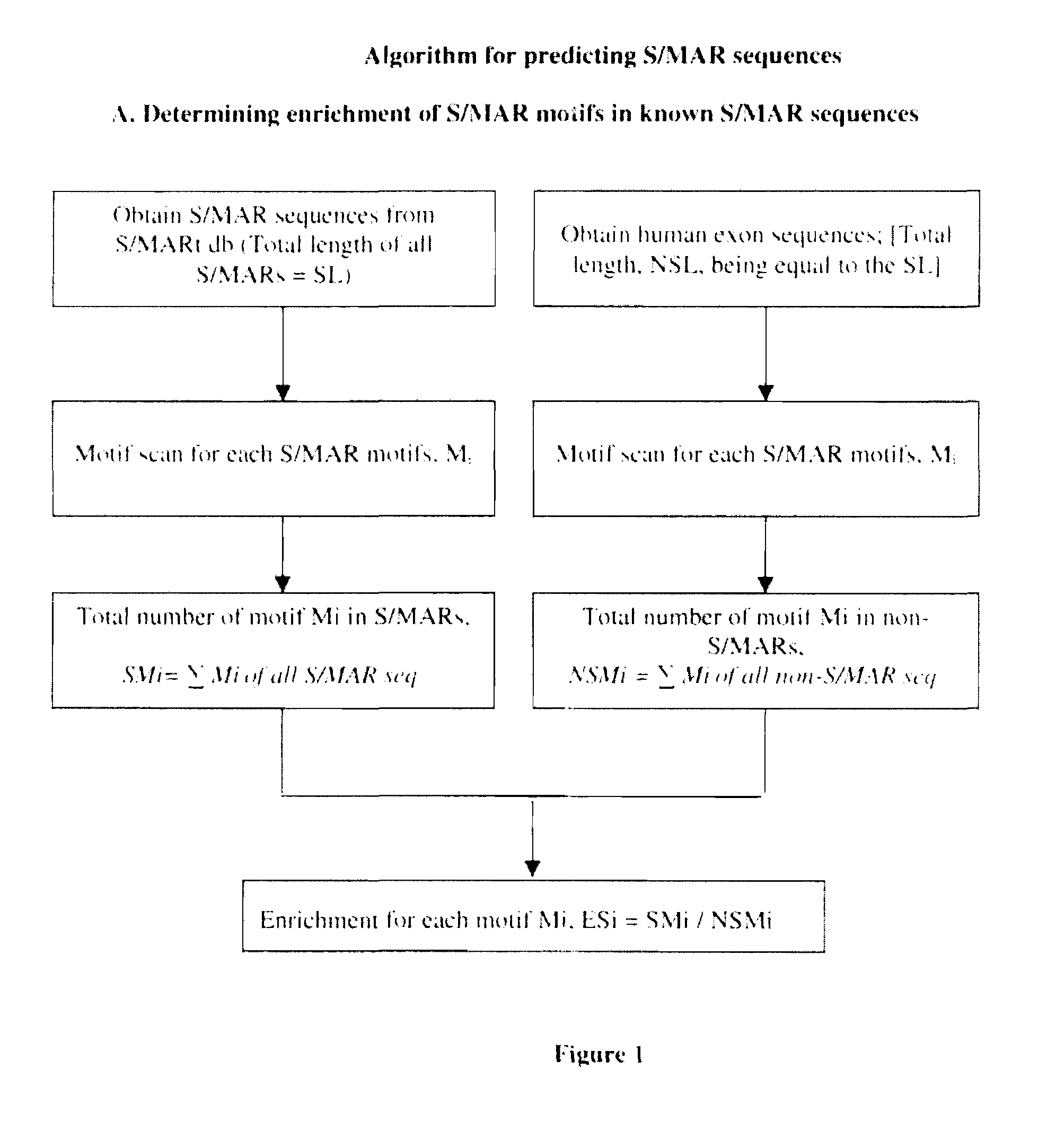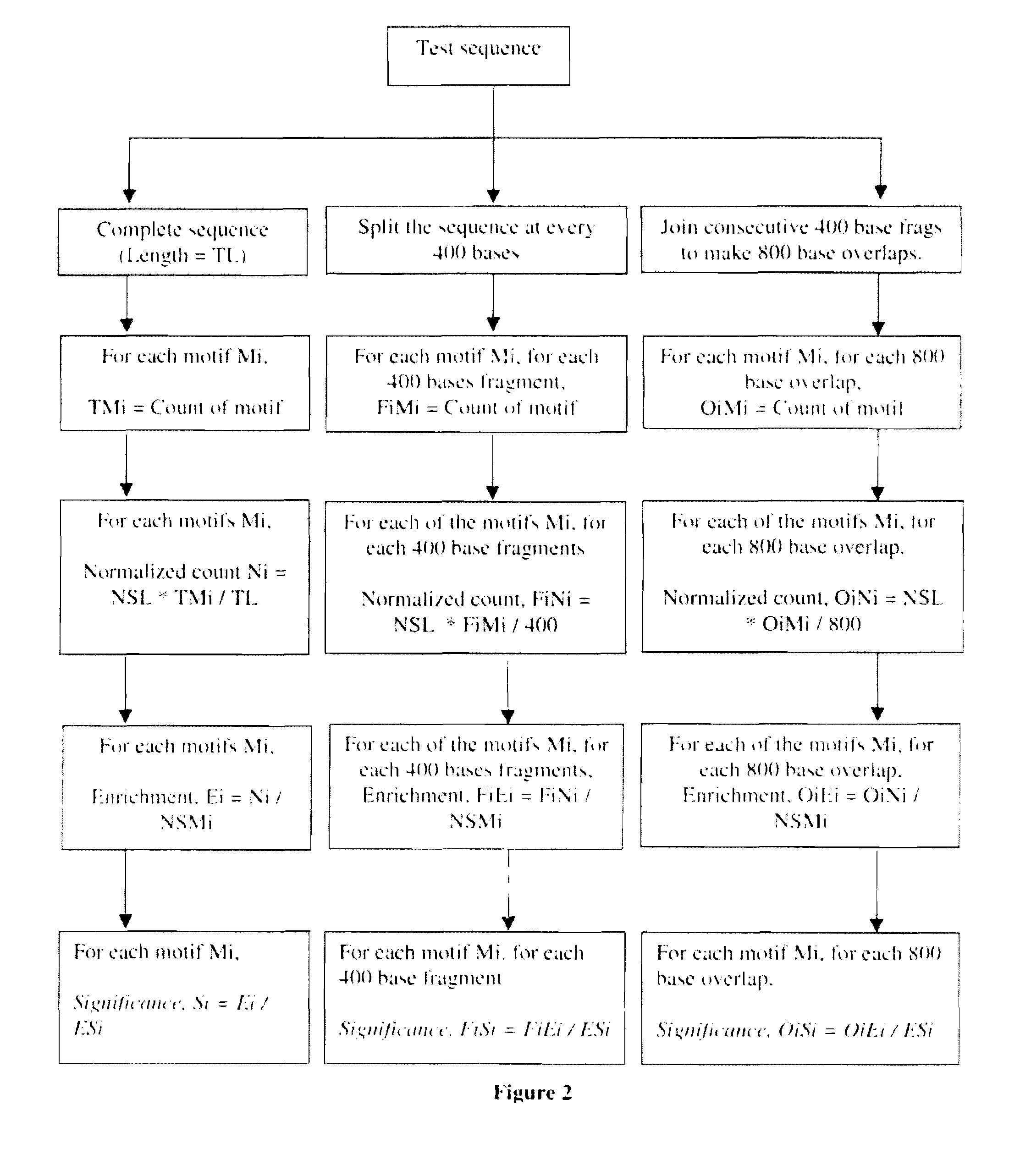Polymer encapsulated aluminum particulates
a technology of aluminum particulates and polymer encapsulates, which is applied in the field of new bioinformatics approaches, can solve the problems that experimentation detection is not suitable for large-scale screening of genomic sequences, and achieve the effect of enhancing gene expression and protein production
- Summary
- Abstract
- Description
- Claims
- Application Information
AI Technical Summary
Benefits of technology
Problems solved by technology
Method used
Image
Examples
Embodiment Construction
[0072]Scaffold / matrix attachment regions (S / MARs) are operationally defined as DNA elements that bind specifically to the nuclear matrix or as DNA fragments that co purify with the nuclear matrix. S / MARs are sequences in the DNA of eukaryotic chromosomes where the nuclear matrix attaches. These elements constitute anchor points of the DNA for the chromatin scaffold and serve to organize the chromatin into structural domains. These are found at the base of the chromatin loops into which the eukaryotic genome appears to be organized.
[0073]These regions are about 300 bp to several kb in length and are present in all higher eukaryotes, including mammals and plants (Bode et al., 1996; Allen et al., 2000). S / MARs are notable for their AT richness and likely narrowing of the minor groove (Gasser et al., 1989; Bode et al., 1995, 1996). They belong to non coding sites in the genome. Scaffold / matrix attachment regions (S / MARs) are essential regulatory DNA elements of eukaryotic cells.
[0074]Fu...
PUM
| Property | Measurement | Unit |
|---|---|---|
| Fraction | aaaaa | aaaaa |
| Fraction | aaaaa | aaaaa |
| Fraction | aaaaa | aaaaa |
Abstract
Description
Claims
Application Information
 Login to View More
Login to View More - R&D
- Intellectual Property
- Life Sciences
- Materials
- Tech Scout
- Unparalleled Data Quality
- Higher Quality Content
- 60% Fewer Hallucinations
Browse by: Latest US Patents, China's latest patents, Technical Efficacy Thesaurus, Application Domain, Technology Topic, Popular Technical Reports.
© 2025 PatSnap. All rights reserved.Legal|Privacy policy|Modern Slavery Act Transparency Statement|Sitemap|About US| Contact US: help@patsnap.com



